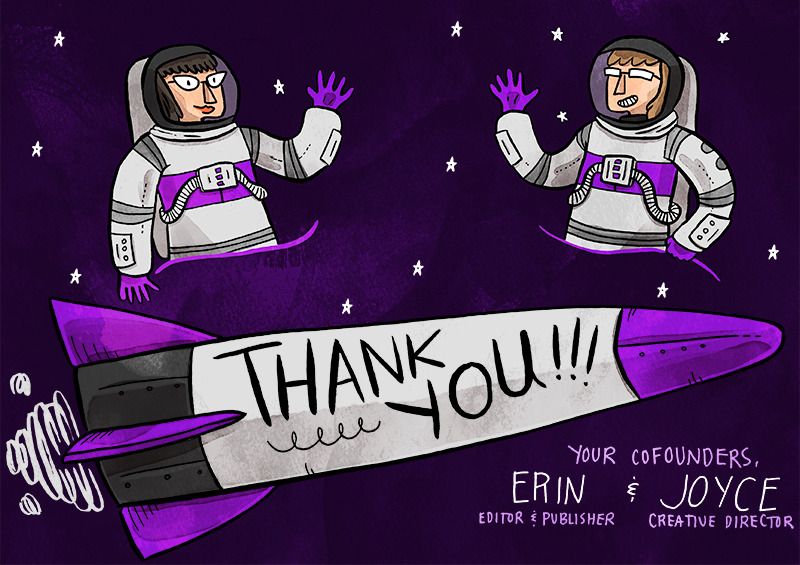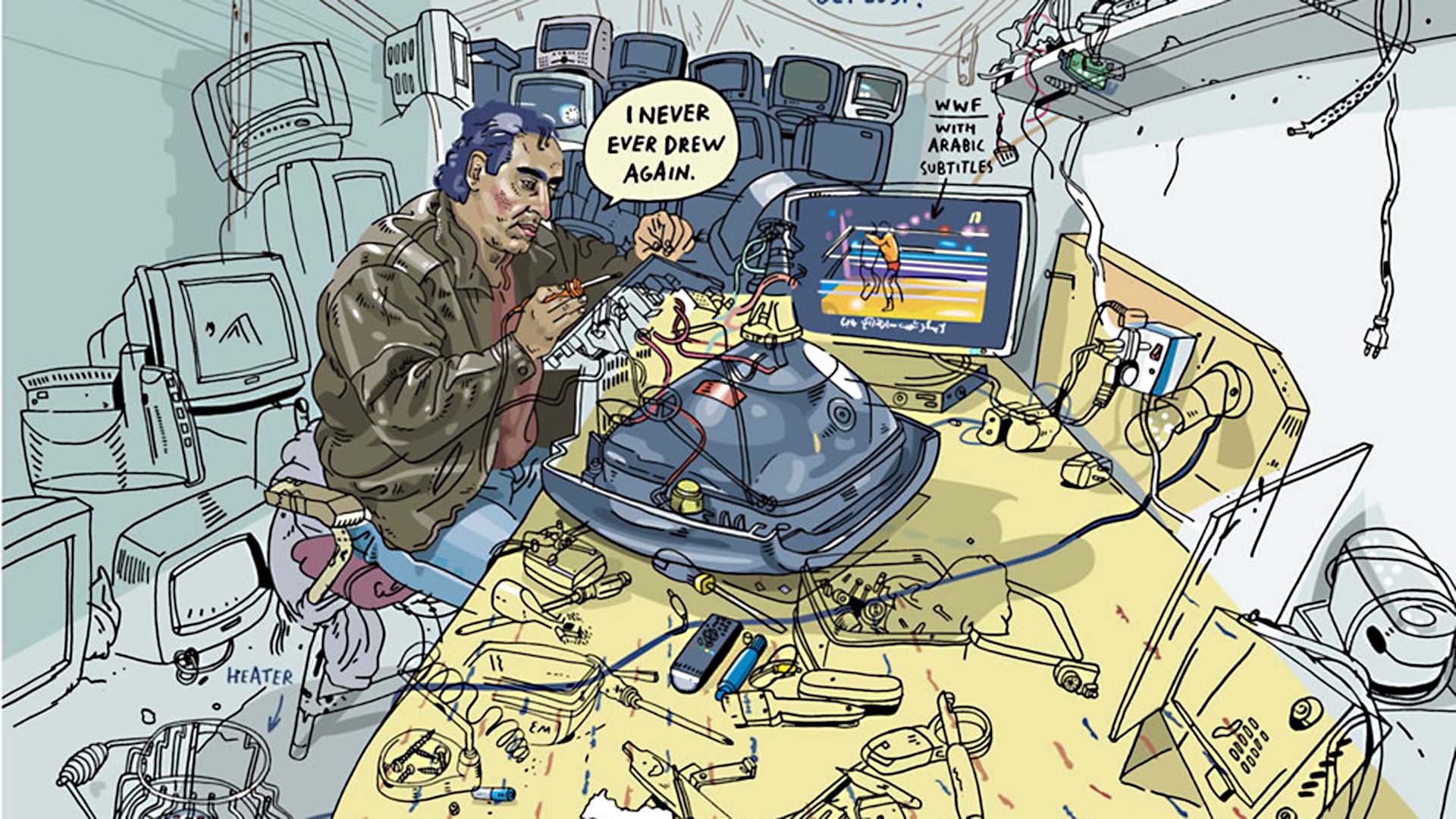Graphic journalism, also known as comics journalism, has some major advantages in this digital age of clickbait news. As a form of visual storytelling it can clarify complex subjects in an easy and approachable way, which is invaluable when most people have neither the time nor the attention span for long, in-depth articles. Also, it’s slow journalism, with the reporter being embedded in his subject for a longer period, and therefore it’s timeless. Comics journalism addresses the big themes of our age, not the news that is out of date by tomorrow. We selected five of the best international graphic journalism platforms for you.
By Natasja van Loon & Tonio van Vugt
Drawing the Times
Since its foundation in 2015, Dutch platform Drawing the Times has addressed several big themes of this age. There is a climate change special, a human rights special, a feminism special, a stories of the Arab world special, and a special called Scribble Your Story: a graphic journalism contest for journalists from six African countries. They even have two meta-specials on graphic journalism: one explaining how it works, and another one on the future of graphic journalism, being one of the fastest rising comic disciplines in the world. Also noteworthy is their ongoing dossier with refugee stories. The huge collection of comics that can be found here is guaranteed to keep you busy for weeks. And although this platform is Dutch in origin, the comics are all in English, because Drawing the Times’ ambitions are unmistakably far wider. Among its ranks are internationally renowned artists like Olivier Kugler (Germany), Josh Neufeld (USA) and Victoria Lomasko (Russia). Another remarkable thing: the editorial board is 100% female.

Cartoon Movement
Even more ambitious is Cartoon Movement, at least in regard to scope. ‘The Internet’s #1 publishing platform for high quality political cartoons and comics journalism’ is the tagline and they are probably right about that. If you thought Drawing the Times had a large pool of various collaborating artists, then take a look at Cartoon Movement. Literally every country is represented here, although you won’t find any really long stories. The comics section is of substantial quality but small. However, you won’t find a larger collection of political cartoons anywhere else, with new additions at least four times a week. Salient detail: this platform may be an international organization, but its origins are also Dutch. The Netherlands may be a tiny country, but it is truly big in comics journalism, thanks to government support. The platform was founded in 2010 to ‘promote the political cartoon as a fundamental style of journalism’ and it did early projects on both the Haiti Earthquake and the Occupy movement. They also actively support free press and the rights of editorial cartoonists.
Graphic Journalism
Graphic Journalism is the personal project of the Lebanese-Swiss comics journalist David Chappatte, who was born in Pakistan. He draws for Le Temps, Neue Zürcher Zeitung (Sunday edition) and the International New York Times, and publishes both in English and in French on Graphic Journalism. The subjects he addresses on Graphic Journalism are, among other things, life on death row, the Guatemalan war, the current situation in Gaza and Lebanon, the empty capitol of Myanmar, and memories of The Wall in Berlin twenty-five years after it fell. Some of these stories can be found on the site itself, others consist of links to the digital newspapers that published them. Graphic Journalism is not a joint venture like Drawing the Times or Cartoon Movement, who try to collect as many different artists as possible, so it’s not as varied, but Chappatte’s work is important and interesting enough to warrant its place in this list.

The Nib
The Nib is an American online non-fiction comics publisher edited by Eleri Harris and award winning graphic journalist Matt Bors. It was founded in 2013 and relaunched in 2016, and delivers engaging and provocative social commentary in the form of political cartoons and satire, comics journalism, and non-fiction writing (like essays) from a diverse team of contributors. Their focus is mostly the American perspective and American news, like the GOP tax cuts, the machinations of Wikileaks founder Julian Assange and how nationalism is re-inventing history, subjects that probably sound pretty familiar to viewers of satirical news shows like The Daily Show and the former Colbert Report. That’s hardly surprising, since the The Nib’s content is heavily based on those satirical traditions, with titles like ‘Trump’s Twitter Was Deleted And For A Brief 11 Minutes, We Were All Happy Again’. The light comical touch of The Nib is a welcome change to the usually rather heavy load of serious world news.
Symbolia
Although Symbolia is not currently active anymore, the digital comics journalism magazine, that was developed for tablet computers like the iPad and the Kindle, still contains many pieces that warrant its place in this list. Symbolia existed for only two years, from 2012 until 2014, but during its short life span it helped both legitimize an industry and change the way people think about what journalism can be. It has published hundreds of pages of illustrated journalism in those two years, on stuff like the Affordable Care Act, terraforming on Mars, and the future of skilled labor. It also launched the careers of quite a few important artists like Jon Chad (on making the future by 3D printing), science journalist Roxanne Palmer and Dutch graphic journalist Eva Hilhorst (the latter would initiate the above mentioned Drawing the Times). Like Drawing the Times, Symbolia – founded by Erin Polgreen and Joyce Rice – was a mostly female venture.

 Submarine Channel
Submarine Channel






